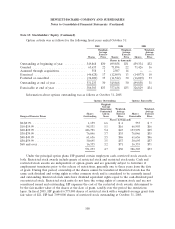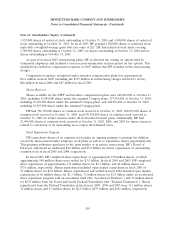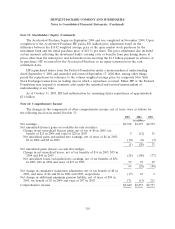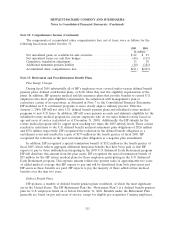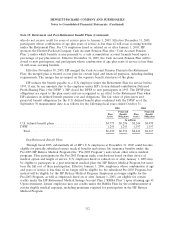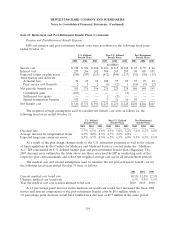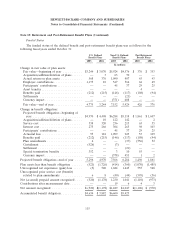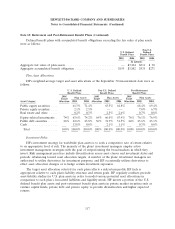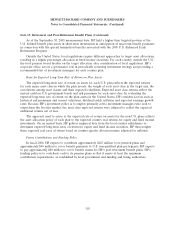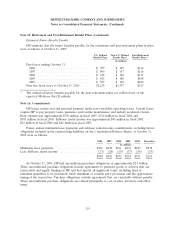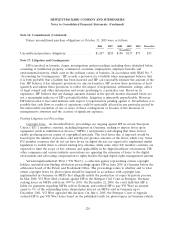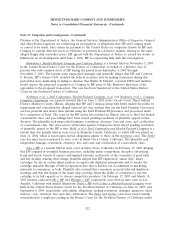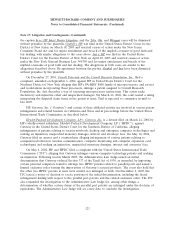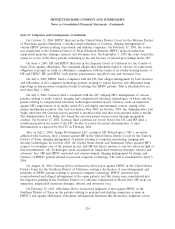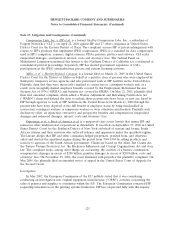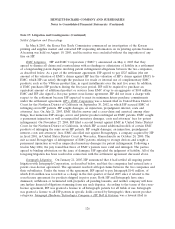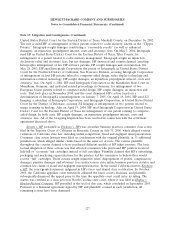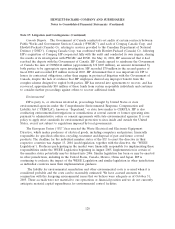HP 2005 Annual Report Download - page 122
Download and view the complete annual report
Please find page 122 of the 2005 HP annual report below. You can navigate through the pages in the report by either clicking on the pages listed below, or by using the keyword search tool below to find specific information within the annual report.HEWLETT-PACKARD COMPANY AND SUBSIDIARIES
Notes to Consolidated Financial Statements (Continued)
Note 15: Retirement and Post-Retirement Benefit Plans (Continued)
As of the September 30, 2005 measurement date, HP held a higher than targeted portion of the
U.S. defined benefit plan assets in short-term investments in anticipation of near-term benefit payments
in connection with the special termination benefits associated with the 2005 U.S. Enhanced Early
Retirement Program.
Outside the United States, local regulations require different approaches to target asset allocations,
resulting in a higher percentage allocation in fixed income securities. For each country outside the U.S.,
the local pension board decides on the target allocation after consideration of local regulations. HP’s
corporate office acts in a governance role in periodically reviewing investment strategy and providing a
recommended list of investment managers for each country plan.
Basis for Expected Long-Term Rate of Return on Plan Assets
The expected long-term rate of return on assets for each U.S. plan reflects the expected returns
for each major asset class in which the plan invests, the weight of each asset class in the target mix, the
correlations among asset classes and their expected volatilities. Expected asset class returns reflect the
current yield on U.S. government bonds and risk premiums for each asset class. In evaluating the
expected long-term rate of return on the plan assets in the United States, HP considers factors such as
historical risk premiums and current valuations, dividend yields, inflation and expected earnings growth
rates. Because HP’s investment policy is to employ primarily active investment managers who seek to
outperform the broader market, the asset class expected returns were adjusted to reflect the expected
additional returns net of fees.
The approach used to arrive at the expected rate of return on assets for the non-U.S. plans reflects
the asset allocation policy of each plan to the expected country real returns for equity and fixed income
investments. On an annual basis, HP gathers empirical data from the local country subsidiaries to
determine expected long-term rates of return for equity and fixed income securities. HP then weights
these expected real rates of return based on country specific allocation mixes adjusted for inflation.
Future Contributions and Funding Policy
In fiscal 2006, HP expects to contribute approximately $245 million to its pension plans and
approximately $40 million to cover benefit payments to U.S. non-qualified plan participants. HP expects
to pay approximately $80 million to cover benefit claims for HP’s post-retirement benefit plans. HP’s
funding policy is to contribute cash to its pension plans so that it meets at least the minimum
contribution requirements, as established by local government and funding and taxing authorities.
118


